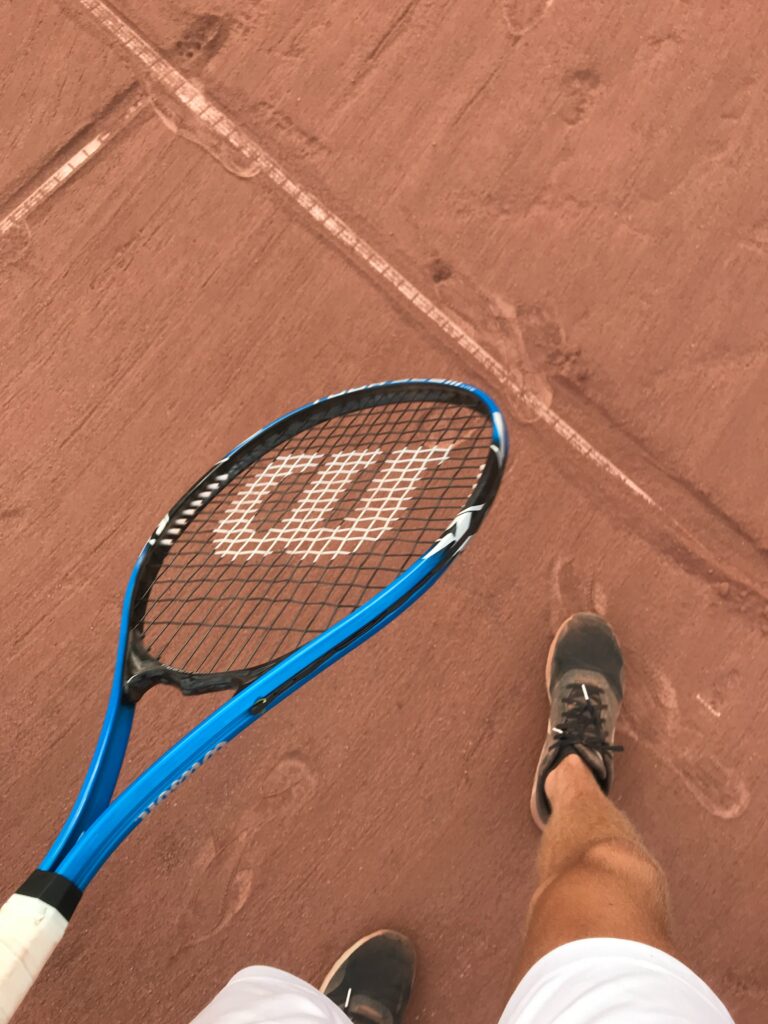Tennis rackets vary widely in their specifications, including weight, balance, head size, and stiffness, all of which are crucial factors to consider when choosing the right one. Stiffness, in particular, plays a significant role and finding the optimal level of flexibility for your needs is essential. Understanding the advantages and drawbacks of rackets with lower stiffness can help in making an informed decision based on your playing style, strength, and other factors. Today, we’ll delve into the benefits and drawbacks of tennis rackets with lower stiffness, as well as highlight some of the top options in this category.

Advantages of Tennis rackets with low stiffness
More Comfort
Lower stiffness rackets make playing tennis more comfortable by absorbing shock when you hit the ball, which means less strain on your arm during long games and fewer chances of getting hurt, like tennis elbow or wrist strain. This extra comfort helps you play longer and improve your skills without feeling tired quickly. Plus, it protects your joints and tendons, so you can keep enjoying tennis without worrying about injuries. Overall, these rackets make tennis more fun and safer for players of all levels.
More feedback
The flexible frames of these rackets also provide better feedback about how you hit the ball. This means you can feel when you hit the sweet spot more easily. When you consistently hit the sweet spot, your shots become more accurate and powerful. It’s like having a built-in coach helping you improve your game. With this improved feedback, you can focus on refining your technique and mastering different shots, making you a more confident and skilled player on the court.
Greater control
The flexibility of these rackets means they bend more when you hit the ball, helping you put it exactly where you want on the court. This is great for players who really care about controlling where the ball goes and want to place their shots precisely. Whether you’re aiming for the corner of the court or trying to hit a tricky angle, these rackets give you the control you need to make it happen. So, if you’re someone who likes to be in charge of where your shots land, these rackets are perfect for you!
Disadvantages of Tennis Rackets with Low Stiffness
Reduced Power
While flexible frames offer several benefits, such as increased comfort and reduced risk of injury, one significant downside is their potential to decrease power. This happens because some of the energy from the ball’s impact gets absorbed by the frame instead of being transferred back to the ball. Although some people believe that the flexible frame’s movement can enhance power by bending and then returning forward, this isn’t entirely accurate. In reality, the ball doesn’t stay in contact with the racket long enough for this to significantly boost power. Therefore, while flexible frames have their advantages, players may need to compensate for the reduced power by adjusting their technique or using other strategies during gameplay.
Best tennis rackets with Low Stiffness
There are alot of options available in the market regarding high flexibility frame and I am going to be naming some of the good ones here with their stiffness ratings:
- Wilson Clash 100 V2 Tennis Racket 55 RA
- Prince Phantom 100 Tennis Racket 59 RA
- HEAD Microgel Radical MP Tennis Racket 62 RA
- Head 2023 Gravity Pro Tennis Racket 63 RA
Yonex EZONE 98L (285G) 65 RA

Conclusion
In conclusion, choosing the right tennis racket involves careful consideration of various factors, with stiffness being a crucial aspect to evaluate. While rackets with lower stiffness offer undeniable benefits such as enhanced comfort, improved feedback, and greater control over shots, they may come with a trade-off in terms of reduced power. Understanding these advantages and disadvantages allows players to make informed decisions that align with their individual playing styles and preferences. Ultimately, tennis rackets with lower stiffness can greatly enhance the playing experience for enthusiasts of all skill levels, providing a blend of comfort, precision, and control on the court.



